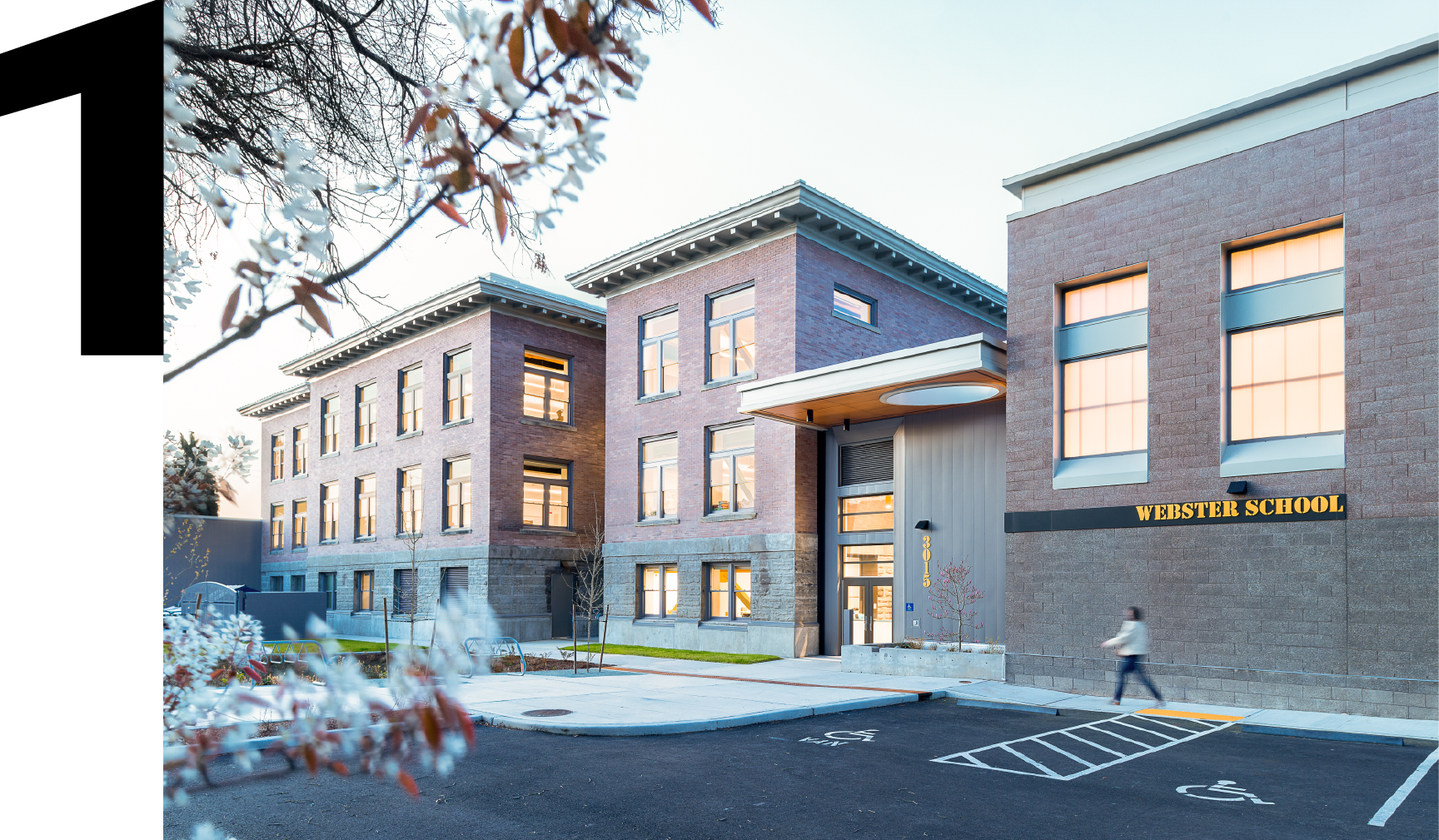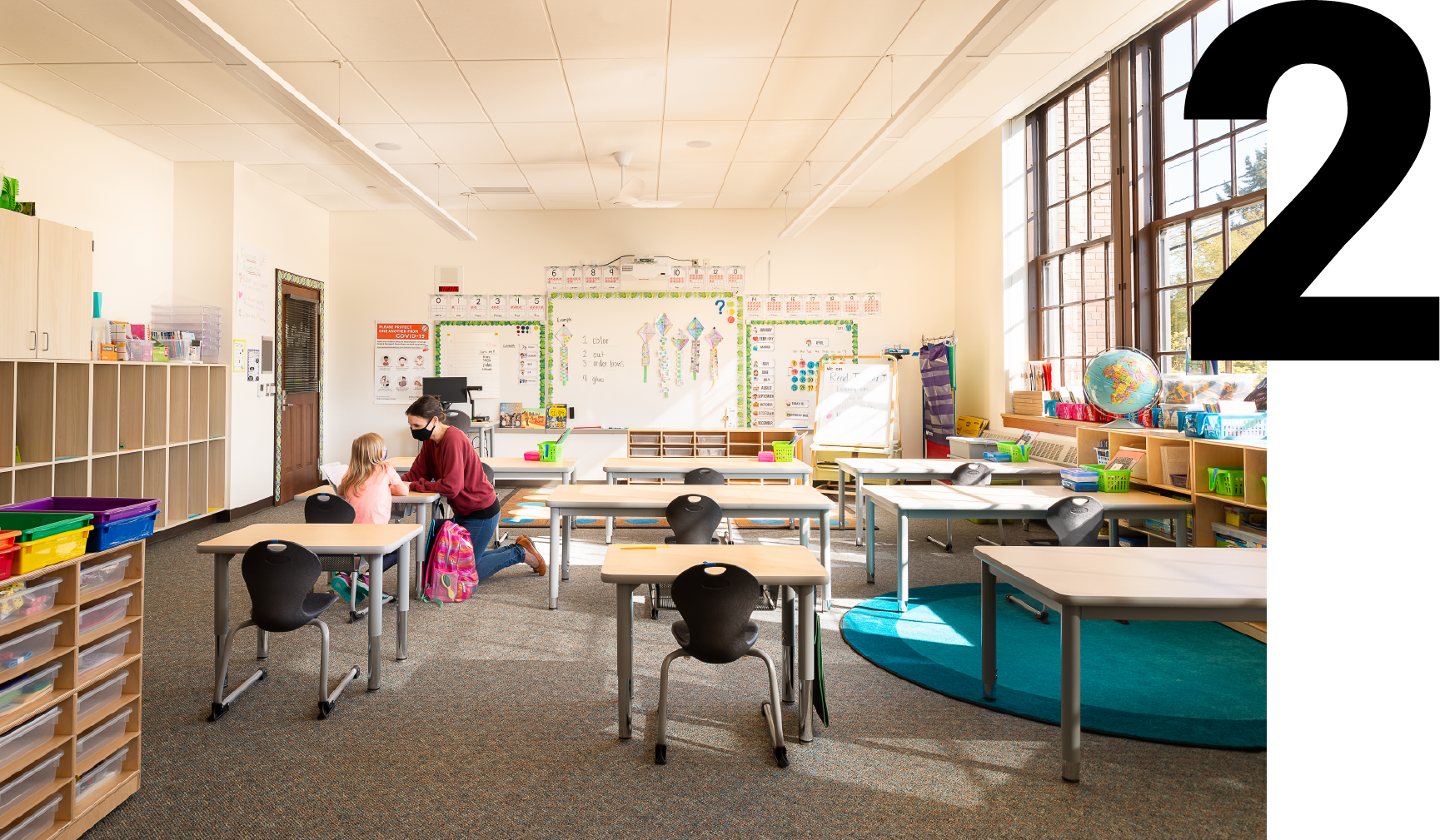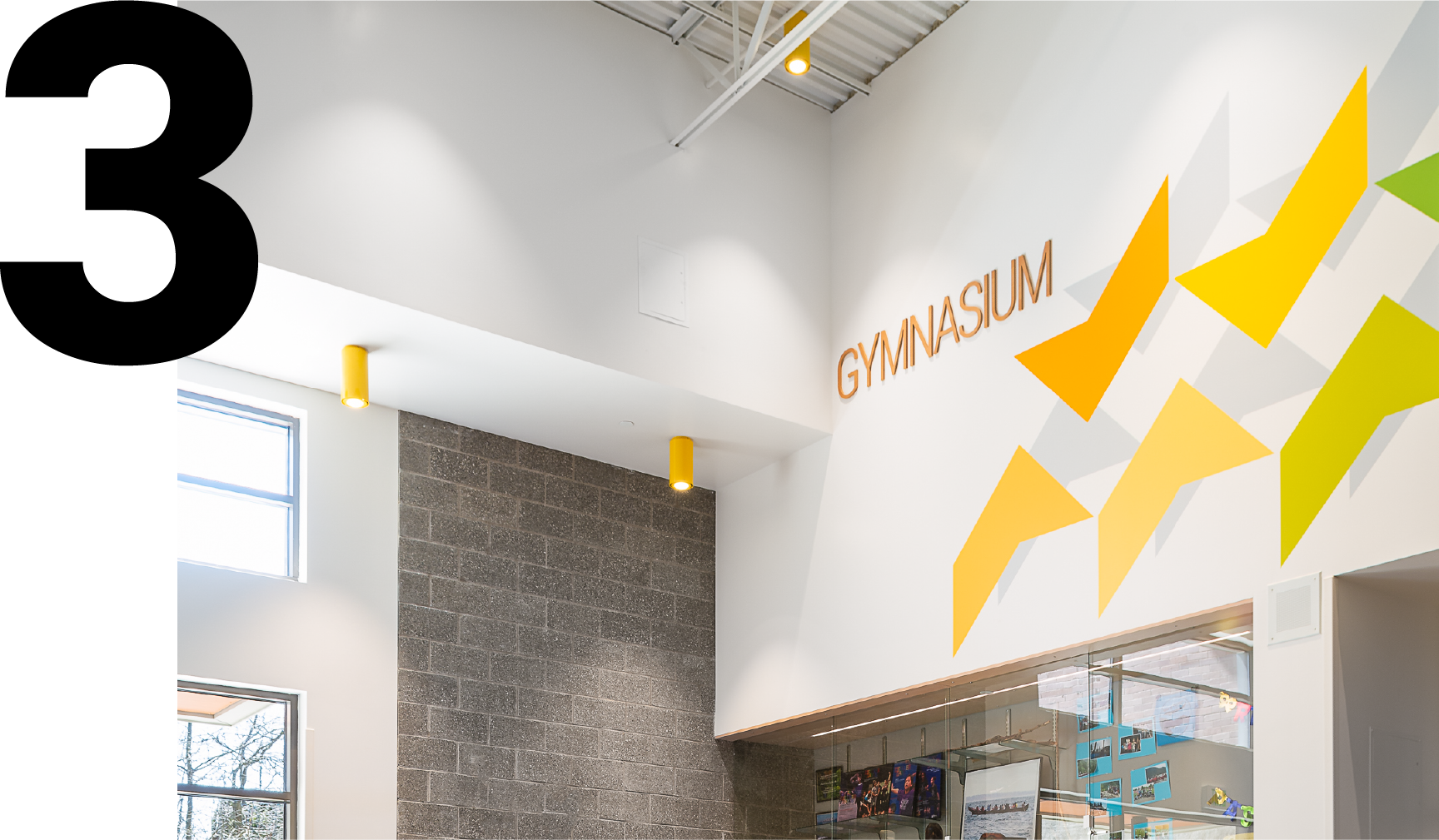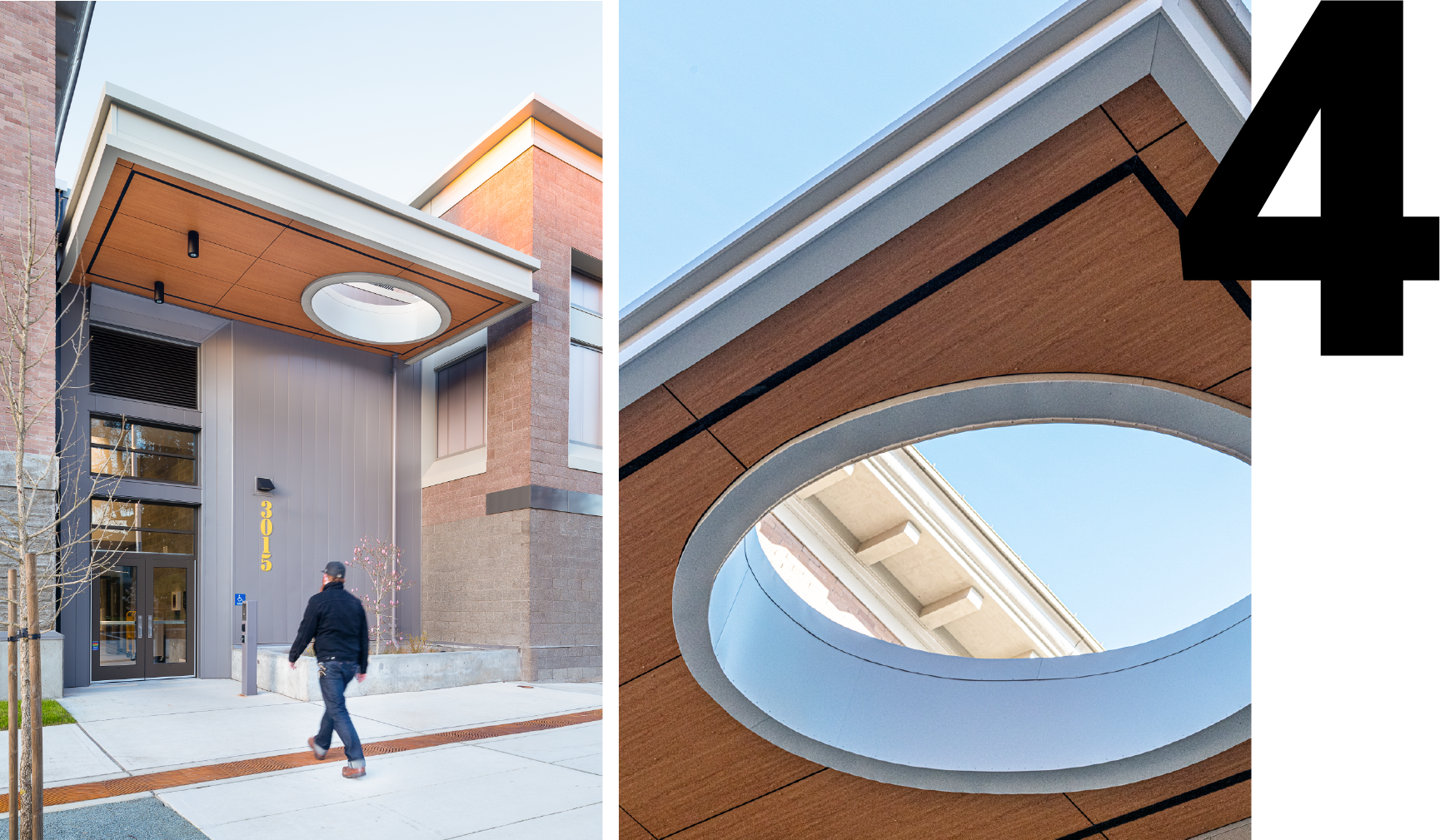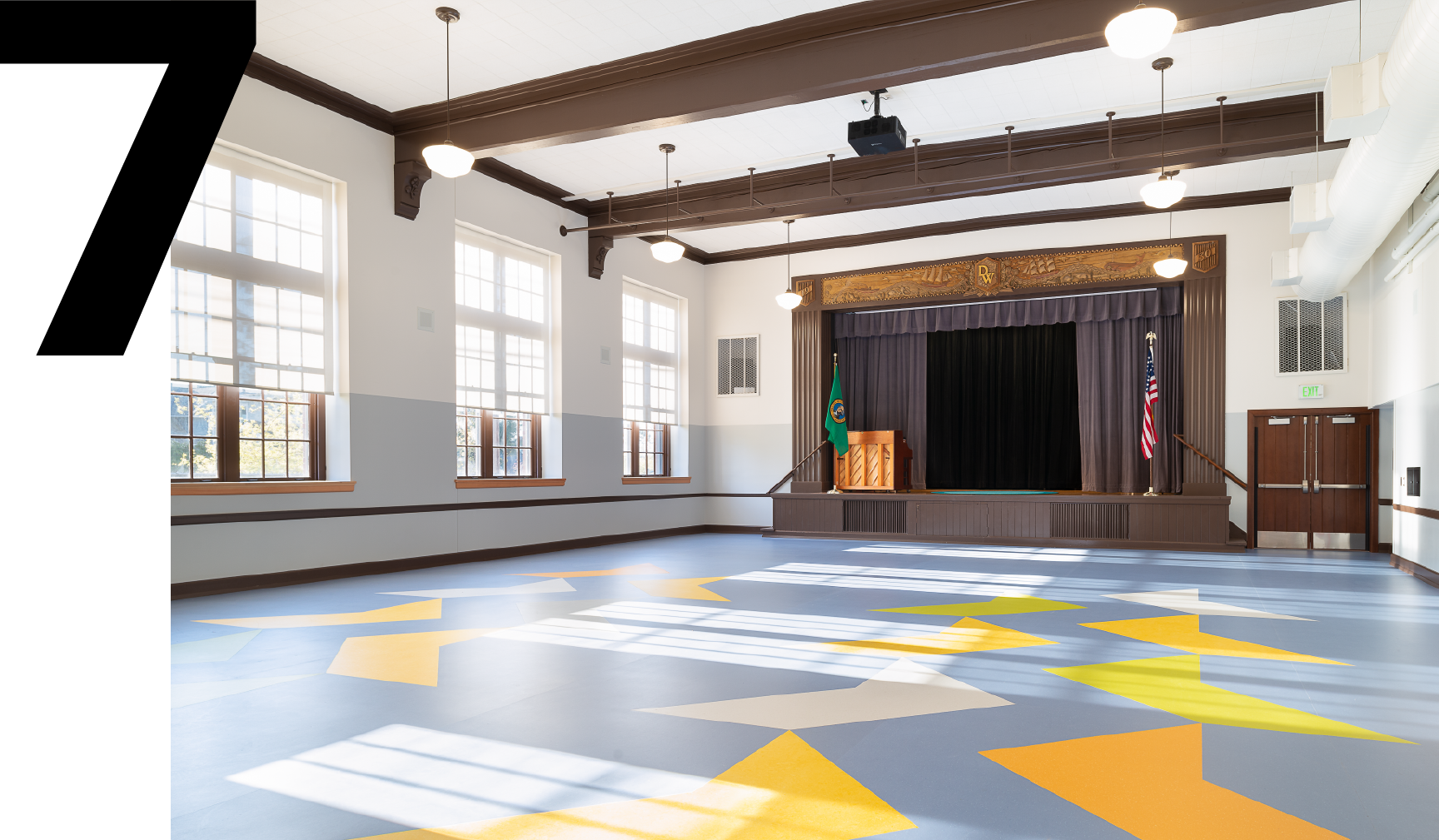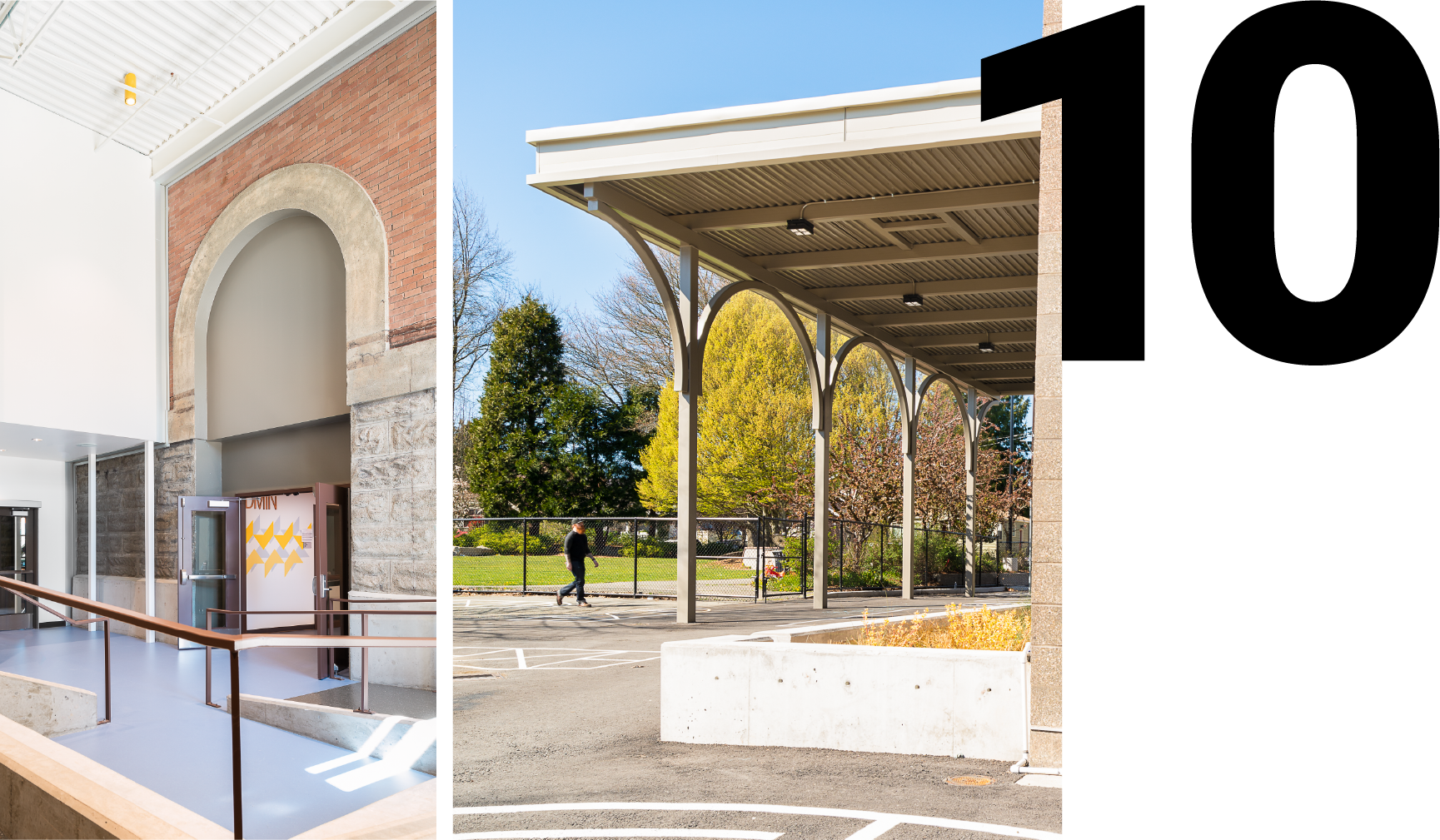First built as a school–then later converted to a museum–the Webster building has been restored and returned to its original purpose.
Written by Holli Smith, AIA
The effort was not easy…it took TCF and BNBuilders nearly 5 years to complete a process of planning, designing, permitting, and constructing. Countless hours were spent pouring through old drawings and photos, assessing architectural concepts and construction strategies, and confirming alignment with myriad codes, standards and guidelines to turn a big vision to reality.
We hold a special appreciation for this project, and have come away with many interesting facts and finds. In recognition of this, here is a summary of the 10 things we most love about the reinvented Webster building, its school community, history, and design features:
1 | ACCESSIBILITY FOR EVERYONE
True to its time period, Webster’s original main entry and prominent stairs sat high above the neighborhood sidewalk, rendering it inapproachable to many. Yet today, everyone gets a friendly wave from a “front door” that’s accessible to all: relocated from south to the north, a new straightforward, at-grade entry sequence welcomes guest arrival.
2 | THE MOTTO OF LICTON SPRINGS K-8
Learning with Joy…Rising to Justice…Creating Our Future…
3 | “BIRDS” IN THE BUILDING
Inspired by the triangular shapes of a quilt, colorful patterns were conceived as a linoleum inlay at the floor of the Cafeteria/Commons. Noted for its resemblance to a flock of birds in flight, a riff on this collection of shapes reappears in other areas of the school as a colorful wayfinding element.
4 | THE ELLIPSE
The wood-grained canopy that shelters the new main entry is perforated by a giant hole, a detail that creates an elliptical view portal to the historic cornice and sky beyond.
5 | THE MATSUDA CHERRY TREE
Sakaye “Frank” Matsuda left Okayama Prefecture to arrive in the US in 1909, working his way across the Northwest to settle a block from Webster Grade School with his wife, Masaye. The three Matsuda children later graduated from Webster, where three flowering cherry trees were planted in their honor.
Not initially welcomed by all, strong bonds were formed with neighbors over time. During the war, the family was taken to internment camps in the spring of 1940. Their belongings were stored by neighbors who also looked after the house until their return.
A single surviving Matsuda cherry tree, carefully protected during the renovation, stands near the original main entry as a symbol of perseverance, acceptance and endurance.
6 | COLORFUL CROSS BRACING
A new framework of structural steel, added for earthquake safety, braces the building. Massive beams were pre-positioned outdoors before being threaded through window openings, an effort described by BNBuilders as “building a ship in a bottle.” Brightly painted in colors that vary by floor, structural elements criss-cross in front of windows throughout the 3 tall levels. Look carefully from outside… can you identify the resemblance to the “birds”? (See #3).
7 | THE PROSCENIUM
The stage in the Commons is another reminder that Webster has been used and loved for generations. The frieze (horizontal decorative panel) above the proscenium (opening of the stage), depicts sailing ships rolling over ocean waves in 3D. During construction, masterful repair touched-up chipped plaster and paint, making the refreshed stage come alive to look brand-new again.
8 | ARCHITECTURAL “TEETH”
Appearing from the ground as painted wood, the intricate cornice detail that crowns the top of Webster’s third story is made of sheet metal. The row of small, rectangular blocks are called “dentils,” an architectural term referencing the resemblance to teeth. This is another element meticulously restored as part of the construction effort.
9 | OLD BEAMS & COLUMNS
Once subdivided into small reading and reference rooms, the newly-expanded library is now awash with daylight that fills the open space. The appearance of timber columns and beams, once buried in the walls that subdivided the space, have been left rough-hewn to reveal their former utilitarian purpose.
10 | ARCHES, ARCHES, ARCHES
How many arches can you find inside the school? Outside of the building? How many new and how many old?
